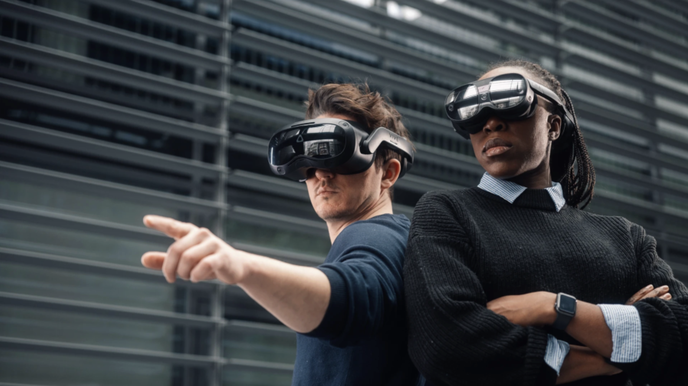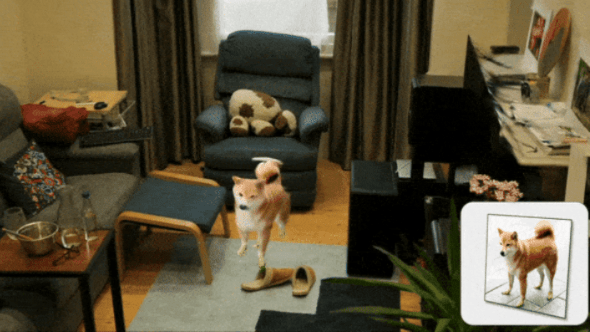Everyone’s most beloved hobbies have taken huge leaps with virtual reality, and dance has gracefully followed suit! Today, we’re going to explore the world of dancing in VR. In this post, you’ll find out how VR dance is supported by positional tracking technology, the intricacies of VR dancing, and how dance and virtual reality are waltzing to new heights as a dynamic duo.
How can you dance in VR?
Believe it or not, virtually anybody can dance in virtual reality. Dance has steadily evolved from tribal dances to staged performances and even kept up with technology to include televised dance routines and viral TikTok shorts.
While some games only require a VR headset and controllers, others may need you to use VR trackers to bring your whole body in on the fun.
VR trackers are positional locators you can put on your body that can bring movements from real life straight into VR. Pop one on your leg and kick — that kick will be registered in VR, too! (If you’re interested in how VR tracking works, check out this post.)
Dancing in virtual reality can be divided into two different types: VR dance games and social VR dance.
VR dance games
All you have to do is pick a song, follow the moves, and look good doing it!
VR dance games are a great way to incorporate fitness into your life. Work off that dinner with a few catchy songs and some twists and dips.
Choose from a ton of styles — from hip-hop to belly dancing, there is a category for everyone. VR even has Zumba!
While these rather structured dancing experiences may not teach you to dance like a true pro, they can still allow you to add some fresh moves to show off to the world in social VR!
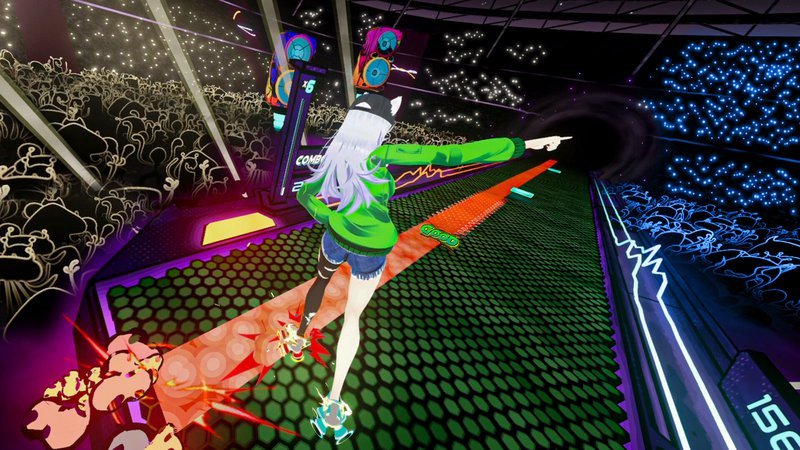 Stomp to the beat and shuffle to the rhythm in groovy games like Dance Dash!
Stomp to the beat and shuffle to the rhythm in groovy games like Dance Dash!
Social VR dance
Want to practice the Nae Nae or learn how to Slickback? You’ve come to the right place!
Social VR dancing is different from traditional dance games, as it blends the socializing aspect of VR communities and the art of dance in titles like VRChat and NeosVR. And it’s a hit!
By recreating the real-life experiences of dance classes, performances, dance battles, and nightclubs in virtual communities, social VR dancers have started a new age of dance (some may call it a dance revolution!).
You can now wave goodbye to location or skill restrictions and dance your heart out with likeminded dancers in VR, whether you want to learn to dance from scratch, refine your dance moves, relive your college breakdancing days, or just have fun at a club without worry.
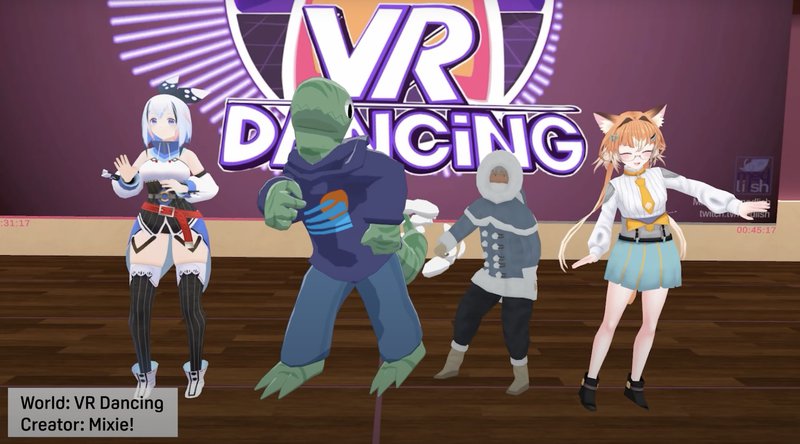 Meet like-minded dancers (or dinosaurs) in social dance worlds in VRChat!
Meet like-minded dancers (or dinosaurs) in social dance worlds in VRChat!
Social VR dance has also opened up doors for aspiring dancers as well as people with social anxiety or low self-esteem. Dancing in front of a crowd or even just entering a dance studio can be daunting, and social VR dance is a way to do all these things in the comfort of your own home. VR gives you the power to dance, rest, or leave the venue at any time! All you need is a good virtual avatar and VR trackers.
How can VR tracking improve your dancing?
Tracking is a vital part of VR dance. Adding trackers to your VR headset not only lets you express yourself through body language in VR but can also help you improve your dance skills considerably.
Explore new dance moves.
Tracking is essential to VR dancing, as you cannot dance (too well) without precision in every move. Try moonwalking with only your arms — that’s how VR dancing would be without trackers!
VR trackers offer you more control over your avatar by giving it additional points on your body to reference. So, the better tracking you have, the more precise your VR boogie will be! This can literally unlock new moves in VR and allow you to practice new dances or study how old ones can be improved.
VR enhances dance practice by providing real-time feedback for your dance moves with a virtual dance studio mirror. See how you are flowing from a third-person view to easily refine those slick slides and get down like a pro!
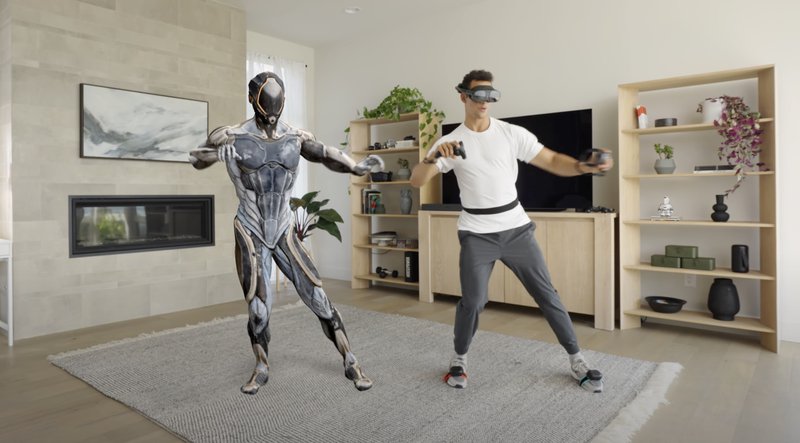 Have every move translate straight to your avatar with VR trackers!
Have every move translate straight to your avatar with VR trackers!
See what others see.
Practice is essential to dancing, as every movement is on display. While real-life dancers are always on a quest to find the perfect full-body mirror to keep their moves in sync, VR dancers can view their avatar at any time! Combine this feature with your trackers, and you can tweak every element of your set for as long as you need.
How can I get the best VR dance experience?
So how do those VR dancers look so natural and smooth with their moves?
Here are some tips on getting the best tracking performance for VR dancing.
More trackers equal more tracking!
So how many trackers do you need for VR dancing? Many VR dance games require no trackers, as they are made for casual entertainment and fitness. Social VR dancing, on the other hand, can be more immersive and require body trackers.
If you’re already using a VR headset and two controllers, you can achieve full-body tracking with just three trackers — one on your waist and two on your ankles or feet. This will help ensure the middle of your body plus the ends of your limbs are all tracked accurately.
Or if you want to get those dance moves super smooth, you will need to get more trackers so that more areas of your body are tracked. Any gaps in tracked limbs are filled by estimation in a process called inverse kinematics. So, if you would like more accuracy and less estimation, you may benefit from having additional VR trackers.
Remove cords from the dance floor.
In the past, VR users needed a connected PC and base stations to enjoy full-body tracking, which could be achieved with VIVE Trackers. (And for PC VR headset owners, this is still the best option.)
If you’re using a non-VIVE PC VR headset, you can also pair the VIVE Ultimate Tracker via SteamVR through our beta program. This doesn’t require any base stations either!
Having these new standalone VR trackers means you can dance to your heart’s desire without worrying about pesky cords or location restrictions.
Choose an appropriate avatar.
The VR avatar you choose can affect your tracking performance. Avatars with non-humanoid features like tails or super-long limbs may lead to strange or unnatural tracking. And not all avatars support full-body tracking. Watch the video below to learn more about avatars and how they work with tracking.
We hope you have enjoyed this look into the next evolution of dance. As tracking technology and social VR games get even better, be prepared for online dance battles and virtual clubbing to become the norm. Get yourself a VR headset from HTC VIVE and get a head start on virtual partying at home!


